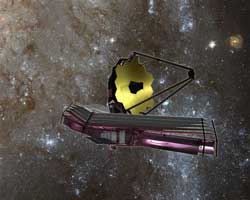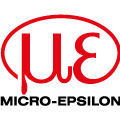
Posted to News on 5th Aug 2007, 20:35
LabVIEW FPGA used on James Webb Space Telescope
National Instruments' LabVIEW FPGA has been used to test more than 250,000 MEMS microshutters that will be installed on NASA's James Webb Space Telescope.

The James Webb Space Telescope (JWST), NASA's next-generation successor to the Hubble, has passed a crucial milestone toward its 2013 launch with the help of National Instruments' LabVIEW FPGA. An important element of the JWST is the Near Infrared Spectrograph (NIRSpec), which is equipped with more than 250,000 microshutters designed to observe thousands of distant galaxies to better understand the origins of the universe. These microshutters are actually micro-electro-mechanical system (MEMS) devices that physically open and close for light exposure, similar to shutters on a camera. Engineers at the NASA Goddard Space Flight Center have successfully tested the microshutters using LabVIEW FPGA to control the shutters in a test chamber.
David Rapchun, Lead Testing Engineer at Global Science and Technology/NASA Goddard Space Flight Center, comments: "LabVIEW FPGA and R Series intelligent DAQ saved hundreds of man-hours and thousands of dollars. The decision to go with commercial off-the-shelf hardware instead of a custom solution provided a more cost-effective method, and the control algorithm can be easily modified to improve testing, explore shutter issues and otherwise further the development of the microshutters."
NASA selected Mink Hollow Systems, a National Instruments Alliance Partner, to develop the FPGA software required for a test application capable of not only actuating each of the nearly 62,000 microshutters that are tested at a time but also providing design feedback and estimating the life of each unit. For this, the LabVIEW graphical development environment was selected to quickly develop the test software required to give engineers the ability to customise shutter actuation tests while monitoring and controlling the test environment. To control the opening and closing of the shutters, engineers use LabVIEW FPGA to design a custom control algorithm that could manage the synchronisation required for opening and closing the shutters 240 times per minute.
Magnetic actuation
Eric Lyness, Senior Integration Engineer at Mink Hollow Systems, says: "Using the FPGA on intelligent DAQ devices, we benefit from low-level synchronisation as well as reliability. For example, if the shutter array were a picket fence with slats that were each 1 inch in width, the magnet would be moving past it at 600mph. If our synchronisation is off even for just a few seconds, the array could be damaged."
NASA engineers pulled the shutters open by sweeping a magnet, controlled with National Instruments PXI-7344 motion controllers, across the array of shutters. They controlled the individual shutters within each array through National Instruments PXI-7811R and PXI-7813R intelligent data acquisition (DAQ) modules. By using magnets to open and close the shutters, which reduced the impact of a shutter on a light baffle, the engineers significantly extended the life of the shutters. They used NI motion controllers to regulate the position of a camera that acquired images during testing and other NI hardware to collect data from temperature sensors and vacuum readouts. The engineers then compared tests and made adjustments if necessary. Using LabVIEW FPGA, engineers are able to create custom I/O hardware and avoid developing expensive, time consuming custom hardware.
Once the JWST reaches its destination, about 1 million miles from earth, it will provide scientists with an unprecedented glimpse into the origins of the universe. During the 10-year lifetime of the telescope, the microshutters may be required to open and close more than 60,000 times. The test system developed by Mink Hollow Systems is capable of testing the reliability of the microshutters for up to 100,000 cycles and on different shutter designs. This kind of testing would normally take years, but this system can cycle the shutters open and close very quickly, up to four times per second.
Use the form on this page to request a callback or more information about NI LabVIEW FPGA.
National Instruments Corporation (UK) Ltd
Measurement House, Newbury Business Park
London Road
RG14 2PZ
UNITED KINGDOM
+44 (0)1635 523545

















